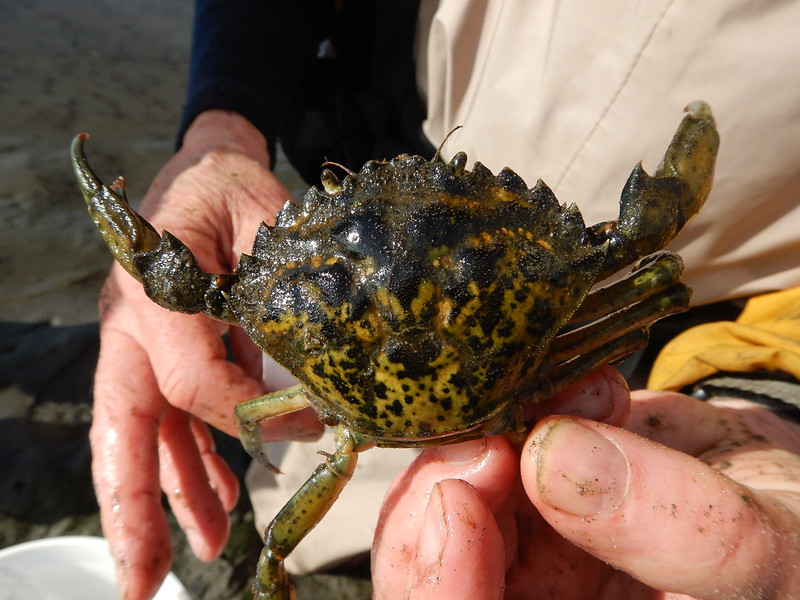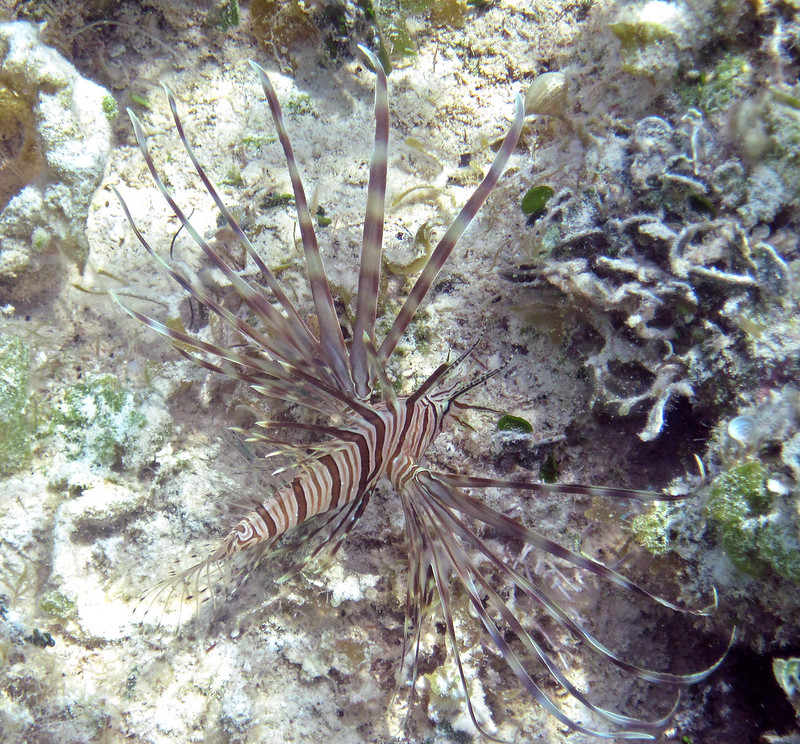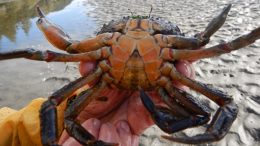European green crabs arrived on the eastern shores of North America in the early 1800s, likely as ship ballast stowaways or affixed to boat hulls. They found their way to the continent’s western shores by the 1980s, and they’ve caused trouble in every new ecosystem they invade.
Wherever green crabs (Carcinus maenas) land, scientists have documented them decimating food webs by devouring benthic invertebrates that provide nourishment for shorebirds, fishes and other species. Over the years, they have eaten their way onto a list of the world’s top 100 most unwanted species.
The economic toll of their appetite is large, too. European green crabs were estimated to have caused $22 million in damage a year to the East Coast commercial shellfishery alone.
Causing both ecological and economic harm has put green crabs in the spotlight, and a team of researchers from the University of California, Davis and other institutions have been studying how to best eradicate them. Along the way the scientists made a surprising discovery that they believe could change how managers deal with other invasive aquatic species.
Green Crab Revelations
In 2009 the researchers decided to see if they could eradicate the invasive species from a small area where the crabs had newly arrived — the Seadrift Lagoon in Stinson Beach, California, about half an hour from San Francisco’s Golden Gate Bridge.
“We thought we could undertake this kind of proof of concept to determine how many bodies, how many traps and how much effort it would take to get rid of the green crab in a fairly small, contained area,” says one of those researchers, Edwin (Ted) Grosholz, a professor at U.C. Davis.
They were successful at reducing the population by more than 90% — from 125,000 crabs in 2009 to fewer than 10,000 by 2013. “We were feeling very good with ourselves,” he says, “But then suddenly the population exploded, and we were faced with even more crabs.”

By 2014 the number of green crabs in Seadrift Lagoon shot up to an alarming 300,000. Other nearby bays didn’t experience a similar population explosion, leaving the researchers wondering what the heck could have caused it.
It turns out that this rather counterintuitive ecological response — where removal efforts can trigger a steep population rebound — had been found in theoretical models, uncontrolled studies and anecdotal reports for decades. “But we were the first who showed in an experiment with controls that in fact, this can happen, it did happen,” says Grosholz.
The reason why they believe the population took off? Quite simply, green crabs are cannibalistic. Adults keep the population in check by eating some of the youngsters. But traps to eradicate the crabs caught only the adults, which left a slew of uneaten offspring ready to grow big and strong.
Given time things could have gotten even worse, as a female green crab that reaches maturity can produce up to 185,000 eggs.
These findings revealed important data for managing invasive European green crabs, which have now made their way to five continents, but the researchers believe the implications go far beyond one species.
“The results of this study provide an urgent warning to those involved in the management of invasive species,” they write in a new study in the Proceedings of National Academy of Sciences.
Bigger Lessons
The factors that led to the population explosion — known as the hydra effect — aren’t unique to European green crabs. It could happen with other aquatic species, too, says Grosholz, including almost all crabs, lobsters, shrimp, and even a number of fishes.
And it’s not just species that eat their young, either. “You can see this response in any species where the adults consume a lot of the resources that their offspring might use,” he says.
Their findings, he says, suggest that ecologists and managers may need to rethink how they manage invasive species that fit these criteria.
“The bigger picture is that there are people all over the planet spending a lot of money trying to eradicate invasive species — in marine ecosystems in particular — and our message here is to stop, back away,” he says. “Let’s give up trying to fully eradicate these types of species.”
A better idea, he says, is to reduce the species down to a lower level where the harm they cause is eliminated or reduced, but not so low that the species have an opportunity bounce back.
Another recent study in the journal Frontiers in Ecology and the Environment, by Grosholz and University of Alberta biologist Stephanie J. Green, lays out how to undertake this strategy of “functional eradication.”
Grosholz and Green surveyed more than 200 aquatic invasive-species specialists about how they try to manage invasive species and whether they focus on eradication, containment or suppression. What was most interesting, says Grosholz, was that virtually none had specific population targets for the invasive species they were managing.
“It’s either ‘we’re going to go get them all’ or ‘we’re going to try to knock the population down,’ but they don’t have any specific number,” he explains. “So we actually provide a way of suggesting how managers who are undertaking these programs can use the data that they usually already have to come up with the best target.”
The goal is to determine the ideal range of population where managers can begin to recover the native species or ecosystem function that’s been harmed by the invasive species. And often the answer isn’t simply linear, he says. “It’s not like if you reduce the invasive species a little bit more, you can bring more native species back — there’s often a threshold you need to hit for recovery to begin.”
If the number is too low, the invasive species will still damage the ecosystem. If the number is too high, managers might be putting in more work than they need to.
Their research on functional eradication aims to help invasive species specialists more quickly find that crucial number.

For example, they calculate that reducing populations of another deadly invasive species, the red lionfish, to below 25 individuals per hectare in the tropical Western Atlantic “could prevent predation‐induced declines in native fishes and result in low rates of recolonization.”
Doing the Work
Having that data is a critical first step. But getting the work done on the ground is another issue. For managers working to control invasive species in aquatic systems it can be particularly challenging — and resource-intensive.
“With a lot of terrestrial invasions, especially involving things that don’t move like plants, it’s pretty easy to know when you succeed and when you’ve gotten them all,” says Grosholz. “But when you’re thinking about things in the water — in lakes or estuaries or oceans — you often can’t even see them. So in most cases, when the horse is out of the barn, it’s going to be very difficult to eradicate something in these ecosystems.”
That’s where community scientists can come in, he says.
“We have throughout this [work in California] relied on volunteers to help pull the traps and count the crabs. We put out 90 traps a day and pull in thousands of crabs a day,” he says. “Volunteers were really instrumental in reaching our goals for the project. And now they’re really instrumental in maintaining this low population level.”
The key to community science, though, is finding people who are concerned enough to do the work — and have the time.
When those two things align significant conservation work can be accomplished — and it’s work that will become increasingly important as climate change and other environmental pressures further threaten biodiversity.
Invasive species have contributed to many examples of loss of biodiversity, but driving species to extinction isn’t the only threat, says Grosholz. Invasive species can also cause “functional extinction” of native species.
“In other words, the role in the ecosystem — whether it’s exchanging energy biomass or contributing to trophic support — can be eliminated,” he says. “So we may not entirely lose the native species, but we may lose the function they provide to the ecosystem — and that’s really important, too.”
![]()


